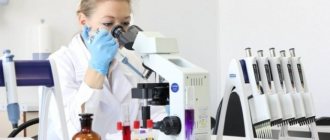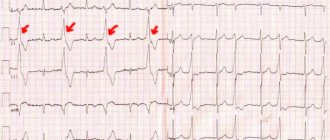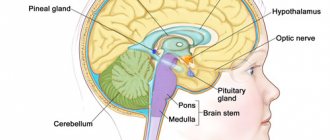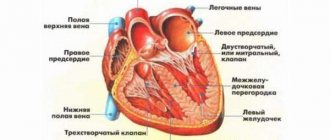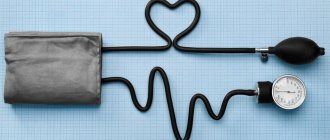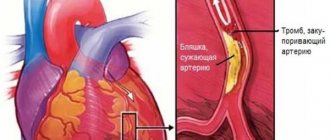Types of disease
Facial hyperemia is of two types: venous and arterial.
- In the first case, the phenomenon is observed when blood stagnates in large vessels caused by cardiac dysfunction. There is an oversaturation of blood in the brain, manifested by dizziness, a feeling of squeezing and noise. Due to lack of oxygen, tissues expand, losing their strength and elasticity.
- In the event of an arterial failure, increased inflow leads to an increase in temperature and coloration of the skin in a bright red color. Changes in the system are caused by mechanical and neural disturbances.
- Depending on the location of the pathology, facial hyperemia is divided into a widespread form, in which the entire organ except the forehead is affected, and a focal form. In this case, the chin, nose or cheeks are affected. In areas, tissue compaction and discoloration are observed.
- The disease occurs both in the chronic stage, caused by metabolic disorders or pathology of internal organs, and in the acute stage, diagnosed due to poisoning, inflammation or infection.
Types of hyperthermia
They are as follows:
- Red. Considered the safest. There is no circulatory disturbance. A peculiar physiological process of cooling the body, which prevents overheating of internal organs. Signs – skin color changes to pink or red, the skin becomes hot when touched. The person himself is hot and sweating profusely.
- White. When talking about what hyperthermia is, we cannot ignore this type. It poses a danger to human life. A spasm of the peripheral vessels of the circulatory system occurs, which leads to disruption of the heat transfer process. If this condition lasts for a long time, it will inevitably lead to swelling of the brain, impaired consciousness and the appearance of seizures. The person is cold, his skin becomes pale with a bluish tint.
- Neurogenic. The cause of its appearance is a brain injury, a benign or malignant tumor, local hemorrhage, an aneurysm. This species is the most dangerous.
- Exogenous. Occurs when the ambient temperature rises, which contributes to the entry of a large amount of heat into the body.
- Endogenous. A common cause of its appearance is toxicosis.
Symptoms and causes of vascular pathology
Hyperemia of the skin of the face has specific features that do not allow a mistake in diagnosis. Among them:
- a feeling of a persistent feeling of burning of the integument, which is accompanied by soreness and itching;
- the appearance of unnatural brown or red spots;
- increased sensitivity;
- regular occurrence of symptoms.
Among the root causes of the disease, experts identify:
- disruptions in the functioning of the digestive system, manifested by gastritis, pancreatitis, stomach ulcers and constipation;
- the presence of intestinal infections and tumors;
- hormonal or endocrine disorders;
- chronic sinusitis, rhinitis;
- systemic pathology (lupus);
- increased hemoglobin levels (erythrocytosis);
- skin damage with pimples, blackheads, cuts, microcracks or boils;
- allergy;
- strong temperature or mechanical effects;
- hypertension;
- heart disease;
- alcoholism.
Causes of endogenous and esogenous hyperthermia
The following reasons are identified:
- Excess hormones of the adrenal glands, ovaries, thyroid gland. Endocrine pathologies of these organs provoke increased heat production.
- Reduced heat transfer. An increase in the tone of the nervous system causes a narrowing of blood vessels, which leads to their sharp spasm. For this reason, the temperature jumps up within a few minutes. On the thermometer scale you can see 41 degrees. The skin becomes pale. That is why experts call this condition pale hyperthermia. The reason that most often provokes this problem is obesity (third or fourth degree). The subcutaneous tissue of obese people is highly developed. Excess heat cannot “break through” through it. It stays inside. An imbalance of thermoregulation occurs.
We continue to study hyperthermia (what it is and what are the reasons for its manifestation).
Exogenous heat accumulation. Factors that provoke it:
- Finding a person in a room with high temperature. This could be a bathhouse, a hot shop. Long stays under the hot sun are no exception. The body is unable to cope with excess heat, and a failure occurs in the process of heat transfer.
- High humidity. The pores of the skin begin to become clogged, and sweating does not occur in full. One component of thermoregulation does not function.
- Clothing that does not allow air and moisture to pass through.
Troubleshooting
The problem can be solved forever only with comprehensive treatment aimed at relieving the underlying cause.
The decision rests with the dermatologist and cosmetologist. In a difficult situation, they can involve an allergist, cardiologist, psychotherapist, or otolaryngologist.
Askorutin
Medicines prescribed by your doctor include antihistamines, sedatives, beta blockers, and medications that improve the elasticity of blood vessels. The list of the most effective pharmacological agents includes: Ascorutin, Vazonit, Trental 400, Agapurin, Pentoxifyline, Doxy-Chem, Flexital. To eliminate spider veins, the doctor may prescribe electrocoagulation. In rare cases, a surgical method is used in which the area of the sympathetic nervous breakdown is removed. However, such a radical method has a lot of side effects.
Beauty secret
To restore your skin to health, it is recommended to follow several basic rules:
Creams with SPF factor
- Before going outside, you need to protect your skin with a special cream with an SPF factor that prevents the aggressive effects of adverse factors.
- Do not wipe your face with alcohol-containing lotions, which increase redness.
- It is necessary to review your diet by removing alcohol, coffee and hot spices from it.
- When washing, you should avoid hot water, washcloths and procedures that cause damage to the epidermis.
- Physiotherapy and lightening masks, which cleanse and restore the color of the affected areas, demonstrate good results.
- When purchasing cosmetics, you should give preference only to high-quality natural products.
In case of temporary hyperemia, no serious measures need to be taken. It is enough to use a local ointment to stop the discoloration of the skin and peeling of the eyelids.
Main factors causing the problem
The main causes of hyperthermia syndrome include the following:
- Brain damage.
- Ischemic or hemorrhagic stroke.
- Respiratory tract disease.
- Food intoxication and pathological processes occurring in the urinary system.
- Viral infection and skin diseases with suppuration.
- Lesions of abdominal and retroperitoneal organs.
Let's move on to a more detailed study of the causes of hyperthermia:
- Infection. The causative agent is a virus or bacteria. An increase in body temperature appears not only in complex forms, but also in simple ones. Hyperthermia is accompanied by the acute and chronic stages of the pathology.
- Intoxication. Toxins enter the blood. They cause an increase in temperature.
- Injury. In this case, hyperthermia is explained by the appearance of complications caused by infection.
- Tumor. This pathology can provoke an increase in temperature due to infection or the development of a secondary inflammatory process.
- Metabolic disorder. Pathologies of the endocrine system that are accompanied by hyperthermia include: the presence of thyroid hormones in the blood above normal (thyrotoxicosis); pigment metabolism disorder (porphyria); high levels of triglycerides in the blood.
- Malfunctions of the immune system. The conversation is about diseases associated with damage to connective tissue, taking medications and the release of substances into the blood that cause a hyperthermic reaction.
- Vascular damage. The appearance of high temperature can be observed with heart attacks of different etiologies. The pathological focus can be located in the brain and myocardium.
Home remedies to combat unsightly redness
- To exfoliate dead cells, you can use 2% boric acid, salol, zinc ointments, and Hoffmann drops.
- Cooling compresses made from herbal decoctions promote recovery. Among them are yellow sweet clover, calamus, birch, string, clover, tartar, chamomile, raspberry, and burdock.
- Herbal decoctions can be drunk in small doses instead of tea, however, the sequence should be excluded from this list.
- Dietary supplements that strengthen blood circulation can also bring significant benefits.
The final result depends not only on medication procedures, but also on proper facial care.
Therapeutic hyperthermia
Therapeutic hyperthermia is one of the methods of treating malignant neoplasms. It is based on the fact that the patient’s entire body or individual parts of it are exposed to high temperatures, which ultimately increases the effectiveness of radiation or chemotherapy.
The effect of the therapeutic hyperthermia method is based on the fact that high temperatures are more destructive for actively dividing cancer cells than for healthy ones.
Currently, therapeutic hyperthermia is used to a limited extent. This is explained not only by the technical complexity of the method, but also by the fact that it has not been fully studied.
What is facial hyperemia, is it dangerous, how to treat the disease
From this article you will learn: why facial hyperemia appears, what this pathology indicates. Which doctor to go to, how to get completely cured.
Author of the article: Victoria Stoyanova, doctor of the 2nd category, head of the laboratory at the diagnostic and treatment center (2015–2016).
Hyperemia is excessive filling of blood vessels with blood. Hyperemia on the face is manifested by its redness (primarily the cheeks turn red) or cyanosis.
Hyperemia is not life-threatening, but it causes discomfort to the patient and spoils the appearance of the face. You can completely get rid of this pathology by strengthening the cardiovascular system.
If you notice that your face is red or bluish, contact your general practitioner, dermatologist, and cardiologist. Consultation with an endocrinologist is also often required. Sometimes - a gastroenterologist.
Facial hyperemia and the nature of its occurrence
From a medical point of view, hyperemia is an increased filling of a particular area of the vascular system with blood. It appears as a result of active blood flow. This may be due either to the expansion of some adductor arteries, or to the complication of outflow into the veins.
In the first case, they talk about arterial hyperemia of the face. It is characterized by dilation of individual arteries, reduced resistance to blood flow, increased blood volume in the bloodstream, increased pressure in microvessels, and an increase in active capillaries. The temperature of the skin also increases.
In the second case, we are talking about venous hyperemia. It signals venous stagnation in various tissues. This usually happens with thrombosis or low pressure in the veins. Slower blood flow, increased transudation of fluid into the tissue from capillaries, and swelling are noted. Skin temperature decreases. The blood becomes dark in color and gives the skin a bluish tint.
Women experience facial redness more often than men. Poor circulation is provoked by various abnormalities in the body’s activities. These can be both chronic diseases and acute conditions. The best way to diagnose is to see a doctor. If necessary, he will prescribe laboratory blood tests or ultrasound of blood vessels.
Characteristic symptoms
Hyperemia is usually accompanied by facial swelling. A feeling of heat may also be present. Sometimes it is justified by elevated body temperature, and sometimes the temperature remains normal.
- If hyperemia was provoked by mitral valve stenosis or other heart defects, increased heartbeat, shortness of breath, and cardiac cough also appear.
- With VSD and erythrophobia, the patient is worried about rapid heartbeat, anxiety or fear, increased production of saliva or, conversely, dry mouth, sweating.
- Hypertension causes headaches, tinnitus, and spots before the eyes.
- Allergic reactions, in addition to hyperemia, may be accompanied by a rash, itching, gastrointestinal disorders (with food allergies), and elevated body temperature.
- In liver diseases, a very common symptom is heaviness and discomfort in the right hypochondrium. With intestinal tumors - abdominal pain, constipation, diarrhea.
Kinds
According to the provoking factor, they are distinguished:
- endogenous (internal) hyperthermia;
- exogenous (external) hyperthermia.
According to the degree of temperature increase:
- subfebrile – from 37 to 38 ºС;
- febrile – from 38 to 39 ºС;
- pyretic – from 39 to 40 ºС;
- hyperpyretic or excessive – over 40 ºС.
By severity:
- compensated;
- decompensated.
By external manifestations:
- pale (white) hyperthermia;
- red (pink) hyperthermia.
Separately, rapidly developing hyperthermia is distinguished, with rapid decompensation and an increase in body temperature to life-threatening (42-43 ºС) - heat stroke.
Heat stroke - rapidly developing hyperthermia
Forms of heat stroke (by dominant manifestations):
- asphyxial (respiratory disorders predominate);
- hyperthermic (the main symptom is high body temperature);
- cerebral (brain) (accompanied by neurological symptoms);
- gastroenterological (dyspeptic manifestations come to the fore).
The main distinguishing features of heat stroke are rapidly increasing symptoms, the severity of the general condition, and previous exposure to external provoking factors.
Diagnostics
When you contact your GP, you will first be referred for a complete blood count, a blood glucose (sugar) test and a general urinalysis.
Next, biochemical blood tests may be required (for markers of liver diseases, hormones, immunoglobulins, rheumatoid factor).
You will also have an ECG and ultrasound of the heart.
Also, to diagnose diseases that could cause facial hyperemia, the following are used:
- Ultrasound of the liver;
- Ultrasound of the thyroid gland;
- Ultrasound of the ovaries;
- colonoscopy (examination of the intestines using a special rectal probe).
Consequences and complications
Complications of hyperthermia are life-threatening:
- paralysis of the thermoregulation center;
- paralysis of the respiratory and vasomotor centers;
- acute renal failure;
- acute heart failure;
- acute progressive intoxication due to renal failure;
- convulsive syndrome;
- cerebral edema;
- thermal overheating of neurons with damage to the main functional elements of the nervous system;
- coma, death.
Video from YouTube on the topic of the article:
Treatment methods
Facial hyperemia can be completely cured.
Corticosteroid ointments are used to relieve redness and swelling during allergic reactions. Also, the patient is not allowed to come into contact with the allergen again. Sometimes, after recovery, you need to conduct allergy tests - tests to determine what exactly you were allergic to.
In other cases, the emphasis is not placed on local treatment, but rather they deal with the elimination of the underlying disease:
- For VSD and erythrophobia, sedatives are effective: Valocordin, Valerian, St. John's wort, Corvalol.
- For hypertension, beta blockers and ACE inhibitors are used - medications that lower blood pressure, relieve heart palpitations, and improve blood circulation in the body.
- Systemic lupus erythematosus is treated with nonsteroidal anti-inflammatory drugs, corticosteroids, and immunosuppressants.
Local treatment
If you are very concerned about the aesthetic side of facial hyperemia, ask your dermatologist to prescribe you an anti-edema ointment. Along with the swelling, the redness will also decrease. The following tools are popular:
- Ointments based on horse chestnut.
- Heparin ointment.
- Troxerutin.
- Troxevasin.
- Ointments and lotions with tea tree extract.
They improve blood circulation in the capillaries of the facial skin, stimulate lymph flow, and strengthen the walls of the capillaries. This will help get rid of excessive filling of small vessels with blood, as well as stagnation of fluid in the tissues.
Diet
To strengthen blood vessels, eat more foods rich in vitamins P, C, K. To improve skin condition - vitamin E.
Foods high in essential vitamins:
| Vitamin | Where is it contained? |
| P | Black currants, chokeberries, rose hips, dark cherries, citrus zest, apricots, buckwheat porridge, lettuce, black grapes, pomegranates, apples, cabbage. |
| C | Rose hips, citrus fruits, black currants, sweet peppers, kiwi, sea buckthorn, cabbage, viburnum, rowan, strawberries, strawberries, tomatoes, spinach, beans, radishes. |
| K | Seaweed, lentils, spinach, lettuce, green tea, bananas, cabbage, cucumbers, tomatoes, apples, pears, carrots. |
| E | Vegetable oils, cereals, milk, nuts, squid, salmon, dried apricots, prunes. |
Do not eat large amounts of spicy and salty foods, do not drink coffee or alcoholic beverages - this causes vasodilation and promotes a rush of blood to the capillaries of the facial skin.
Lifestyle
To prevent and reduce facial hyperemia, follow these recommendations:
- Don't wash your face with too hot water. This dilates the vessels and causes a rush of blood to them.
- Carry out contrast washes: first rinse your face with warm (but not hot) water, and then with cold (but not ice), repeat several times.
- In cold weather, cover as much of your face as possible with a scarf.
- Use cosmetics to protect your skin from frost.
- On sunny days, always use UV protection cream.
- It's better not to use facial scrubs. They may irritate the skin.
- Do not rub your face with hard towels or washcloths.
- Don't drink a lot of water at night. Otherwise, the next morning you are guaranteed to wake up with a swollen face.
Treatment
The main method of treating hyperthermia is taking antipyretic drugs (nonsteroidal anti-inflammatory drugs, anilides), if necessary, in combination with analgesics and antihistamines.
For hyperthermia, the use of antipyretics is indicated.
For pale hyperthermia, it is necessary to use antispasmodics and vasodilators to improve microcirculation and relieve symptoms of peripheral vasospasm.
What is facial skin hyperemia
Skin hyperemia is the excessive filling of capillaries and vessels with blood in a certain part of the body or internal organ. In this case, the skin of the face. Overflow of blood provokes a constant red color of the skin, which does not depend on your mood or weather conditions. When should you sound the alarm and how to recognize natural redness of the skin from a chronic process?
Factors that can temporarily cause facial flushing:
- Frequent consumption of alcoholic beverages.
- Summer heat or uncontrolled heating in the room.
- Excessive consumption of hot, spicy foods.
- Exhausting physical activity.
- Frequent incorrect position of the body in space, when the head is constantly lowered.
All these causes of hyperemia are considered physiologically natural. As soon as you eliminate one of the listed factors, blood circulation in the skin of the face will normalize on its own.
Genetic disease
Malignant hyperthermia is hereditary. Most often found in anesthesiology. Metabolic processes are disrupted in muscle tissue. The danger of this condition is that during the use of anesthesia or anesthesia, the heart rate increases, the temperature rises greatly, and shortness of breath appears. If timely assistance is not provided, the person may die.
The disease is inherited through generations. If one of the relatives has been diagnosed with it, then the person automatically falls into the risk zone. During anesthesia, medications are used that will not provoke an attack.
Now about the symptoms of the disease:
- Exhaled air contains a large amount of carbon dioxide.
- Breathing is rapid and shallow.
- Heart rate is more than ninety beats per minute.
- The temperature rises sharply to forty-two degrees.
- The skin turns blue.
- A spasm of the chewing muscles appears and the tone increases.
- There are surges in blood pressure.
Causes and symptoms of the disease
The types of redness on the skin can vary greatly depending on the reasons that cause them. In some cases, hyperemia has clearly defined red spots that can occupy almost the entire part of the face. With constant hyperemia, in addition to changes in the color of the skin, other unpleasant symptoms occur: itching, peeling, dry skin, burning, pain. What health problems might hyperemia indicate?
Hormonal imbalances . Hyperemia is often observed in pregnant women, teenage girls, and older women during menopause. That is, all these groups of patients suffer from disturbances in the level of hormones in the body. Endocrine diseases such as diabetes and hypothyroidism are always accompanied by redness on the face.
Dermatological diseases . Often, hyperemia is only a secondary symptom, occurring in various types of skin diseases - rosacea, psoriasis, dermatitis, rosacea, eczema.
Infectious diseases . Skin hyperemia can be a temporary phenomenon and manifests itself at the time of influenza, chickenpox, scarlet fever or measles. Also, hyperemia is a clear symptom of increased body temperature, which is typical for any infections.
Liver diseases . General practitioners immediately ask people with red skin about the state of the gastrointestinal tract and palpate the abdomen. It turns out that excessive redness is a sign of liver and pancreas diseases.
Food allergy . Unlike any other type of allergy, food allergies can take years to develop. An allergenic product, constantly entering the body, even in small doses, causes an appropriate reaction of the immune system. That's why allergy sufferers almost always have a red face.
High blood pressure . Hypertensive patients suffer from fragility of blood vessels, narrowing of their lumen, and loss of elasticity. In such patients, the face and neck are always red. If hyperemia increases sharply, it may signal a critical increase in blood pressure. In these cases, redness is a harbinger of a hypertensive crisis.
Side effects . A number of potent medications can also cause long-term and persistent hyperemia of the facial skin. If you are undergoing treatment and notice severe redness on your skin for the first time, research the side effects of your medications.
How to be treated
Facial hyperemia is not classified as a separate disease. Redness is a secondary accompanying symptom of the disease. Therefore, drug treatment of hyperemia is extremely rare. It is very important to contact a specialist of the right profile in a timely manner and establish the true cause of the change in the appearance of the skin.
If these are hormonal imbalances, then the endocrinologist will carry out the appropriate correction. With food allergies, hyperemia goes away on its own when the manifestations of the allergic reaction are suppressed. If constant redness is caused by stress, excessive nervousness, then you need to reconsider your daily routine and remove irritants.
In cases where hyperemia is severe and may be accompanied by itching and burning, the doctor may prescribe the use of drugs to increase blood microcirculation. These are “Agapurin”, “Radomin”, “Gelofusin”. But you cannot self-medicate - only a doctor should advise the optimal remedy for hyperemia in your case.
Walking around with a constantly red face is an unpleasant feeling. But what to do if diagnosis and treatment of the underlying disease takes a lot of time? You can temporarily remove redness using folk remedies.
Recipe 1. Compress from coltsfoot
This medicinal plant has a calming effect, can act locally on the capillary network and lighten the skin. To obtain a lasting effect, compresses must be performed in courses - 8-10 procedures with a break of one day. To prepare compresses, you need to use dry leaves of the plant. Pour 3 tablespoons of crushed coltsfoot into 0.2 liters of boiling water. Let the liquid sit for 30 minutes. After this we filter. Take the gauze and fold it into quarters. Place a layer of cotton wool soaked in herbal infusion inside. Apply the compress to clean facial skin and hold for 20-30 minutes.
Using the same principle, you can make compresses using other plants instead of coltsfoot: nettle, sweet clover.
Recipe 2. Burdock lotion
Take 100 g of fresh burdock leaves and mince or grind in a blender. The resulting pulp should be placed in gauze, folded in several layers, and the juice should be squeezed out. Take 2 capsules of vitamin E, open with a needle and squeeze the contents into burdock juice. Add ½ teaspoon extra virgin olive or coconut oil. Mix and keep the product in the refrigerator. Every night before going to bed, wash your skin and then wipe with a cotton pad with burdock lotion. Use the product for 14 days and take a break for 2-3 weeks.
Signs of difference between hyperthermia and fever:
- Caused by various etiological factors.
- With fever, patients complain of chills. Moreover, for every degree of temperature increase, their pulse rate increases by 8–10 beats, and their breathing rate increases by two to three chest excursions. With hyperthermia, patients note a feeling of heat and significant sweating. The pulse and respiratory rates increase significantly.
- Physical methods of cooling the body during fever do not affect the temperature, while during hyperthermia they lead to a decrease in temperature.
- For hyperthermia, antipyretic drugs are not effective. During fever, they quickly normalize body temperature.
- An increase in temperature during fever is associated with the activation of oxidative phospholation processes, against the background of which the synthesis of ATP increases, and the body’s defenses are also stimulated. The pathogenesis of hyperthermia, on the contrary, consists of blocking ATP synthesis and increasing the breakdown of already existing “energy” molecules. This leads to a rapid increase in temperature.
Skin hyperemia of the face: can it be cured at home?
When the amount of blood entering the face is too high, it becomes excessively red and does not give a very pleasant impression. Moreover, if ordinary redness, when a person is shy or ashamed, quickly passes, then redness caused by a rush of blood is an almost constant companion of those unfortunate people who suffer from this disease. This is hyperemia of the facial skin, which is a consequence of poor circulation and requires treatment.
Hyperthermia - symptoms
The symptoms are pronounced. The first characteristic signs are increased sweating and breathing rate.
Additional symptoms:
- If hyperthermia occurs in childhood, then children become lethargic and tearful.
- The man refuses to eat.
- Drowsiness or, conversely, increased excitability may appear.
- In childhood, seizures may occur.
- Loss of consciousness is often observed.
As soon as the above symptoms occur, you should immediately call an ambulance.
Increased sweating. Causes. Treatment with folk remedies
Causes of facial skin hyperemia
Everyone who encounters such a problem tries to discover the cause of this phenomenon. Why did this unhealthy redness suddenly appear if there were no visible reasons for concern before? The reasons can be superficial, easily removable, or serious, requiring treatment. This disease can be the result of a number of factors.
- Hyperemia can be a consequence of lupus;
- the skin is an indicator of improper functioning of the gastrointestinal tract (constipation, worms, dysfunction of the glands);
- Even intestinal infections can cause facial redness;
- otolaryngological diseases (sinusitis, rhinitis);
- increased level of hemoglobin in the blood;
- the presence of inflammatory processes (vascular inflammation, acne, pimples, furunculosis, microtears in tissue, cuts);
- redness may be the result of hypothermia or overheating;
- mechanical effects (redness may occur with a strong impact);
- allergy;
- if the skin is chapped.
Whatever the reasons for the hyperemia of the facial skin, first you need to focus on eliminating this negative factor (cure the disease, improve nutrition). And only after this is it recommended to remove the annoying redness with cosmetics.
Symptoms of the disease
How to recognize this unusual disease and not confuse it with other skin phenomena? The skin itself will confirm your diagnosis with the following symptoms:
- redness is permanent;
- outwardly, the redness looks very painful, unnatural;
- often the skin is not covered with solid paint, but with spots - not just red, but even purple;
- Internally you can feel your face burning and glowing.
Your skin begins to turn red because the speed of blood flow through the veins and arteries increases, the temperature in this area rises, and the blood vessels dilate. These are symptoms hidden from the human eye, but confirming the disease with hyperemia.
Possible reasons
Facial hyperemia is especially unpleasant. It reveals even a little anxiety, appears in the most inappropriate cases, is not hidden by makeup and can get worse each time. By identifying the causes, you can significantly reduce the intensity and frequency of external manifestations.
The main causes of facial redness:
- Age. After 35 years, it is necessary to regularly examine blood vessels.
- Diseases. Redness of the face may indicate problems with the digestive system and gastrointestinal tract, gynecology, skin, and nasopharynx.
- Allergy. Sensitivity to certain products and cosmetics sometimes does not appear immediately, but after 2-3 uses. To identify the allergen, special tests are performed.
- External factors. Exposure to the sun, wind, frost, aggressive cosmetic procedures, and the consequences of mechanical damage can cause redness. You should carefully visit the bathhouse and swim in a pool with chlorinated water.
- Psychological stress. A rush of blood to the face often reveals strong emotional experiences. These can be both stressful situations and joyful experiences. Such redness usually goes away quickly.
Most popular: Review of the Librederm care cosmetics line, composition analysis
The causes of hyperemia can only be identified by a doctor; they respond quite well to treatment. It is important to observe the regularity of procedures, dosage of medications, consideration of contraindications and appropriate skin care.
Methods for treating skin hyperemia
This disease requires closer attention. Everyone who encounters it should know whether facial skin hyperemia is curable: its treatment is not quick, but it will still eliminate the unpleasant redness. Entrust the treatment to a dermatologist, and follow the simple rules yourself.
- Get rid of alcohol-based cosmetics: they make your skin drier and cause more redness.
- The disease will go away faster if you use protective creams before going outside.
- When washing, the skin should not come into contact with hot water and rough brushes and washcloths - this leads to injury to the epidermis and redness appears.
- Vaseline, zinc ointment, salol, Hoffmann drops, 2% boric acid - all this is an effective home treatment that eliminates hyperemia.
- Remove everything spicy, alcohol, coffee from your diet - and your skin will clear up and gain a healthy color.
- Treatment often involves electrocoagulation of facial blood vessels.
- Make brightening masks, after which any redness disappears, and the skin becomes radiant and fresh.
- Make cooling compresses: herbal decoctions that are beneficial for blood circulation are cooled, then a paper napkin with slits for the eyes and nose is soaked in it and applied to the face. 2-3 minutes after heating it, wetting must be repeated. Among the herbs in such cases, yellow sweet clover, calamus, coltsfoot, birch, motherwort, string, clover, burdock, raspberry, thyme, tartar and others are recommended.
- Herbal medicine also helps from the inside if you drink decoctions of the same herbs regularly.
- Drug treatment eliminates this type of redness using bioactive supplements.
To make your skin look beautiful and well-groomed, you need to be very careful about any redness that appears on it. This is the only way the disease can be noticed in the initial stages, which contributes to a faster recovery, since treatment will be carried out in a timely manner. Remember: such redness is not a death sentence, and it’s up to you how quickly your skin will bloom with a healthy glow.
Skin prone to hyperemia requires special care
You should try to use products that may cause irritation. To do this, you need to replace washing with wiping using lotion. When summer comes, the best protection for your face from the sun will be a wide-brimmed hat or umbrella.
We offer you several recipes for preparing lotions and ointments for skin with hyperemia
- Take 40 ml of 2% boric acid solution and 40 ml of Hoffmann drops. Mix everything - the lotion is ready for use.
- In order to prepare a protective ointment that will protect against hyperemia in cold and windy conditions, take 30 g of Vaseline and mix it with 3 g of anesthesin. And one more ointment recipe: 20 g of Vaseline, 10 g of zinc ointment and 3 g of salol.
- If there are a lot of red acne on the skin and increased sebum secretion, you need to wipe your face with lotions 2 times a day.
If the hyperemia does not go away, the blood vessels continue to be dilated, then seek help from a doctor.
Pathologies indicated by hyperemia
Face massage
Hyperemia is often a sign of a serious abnormality in the functioning of the body, and serves as an alarming signal.
- Intoxication. In this case, hyperemia can occur due to food poisoning, heavy drinking, long-term drug syndrome and other situations. With alcoholism, people often experience redness of the skin of the face and neck - alcohol intoxication causes redness, which goes away after giving up alcohol within a few days.
- Onset of fever. Often the onset of the disease, accompanied by a feverish state, begins with the appearance of red spots, especially on the face and neck. In this case, the person feels weak, chills or hot, becomes irritable and tearful. After recovery, the spots disappear.
- Features of the nervous system. In this case, in addition to redness of the skin, overexcitement is observed. Moreover, even small manifestations of emotion are accompanied by the appearance of red spots on the body. As a rule, no specific treatment is required. The spots disappear when calmed down, leaving no traces. If redness is excessive and frequent, you can start taking sedatives.
- Acetonemia. Redness of the skin in this case is caused by exposure to household or chemical poisons. An immediate call to the doctor is required to eliminate the poisoning.
- High hemoglobin level. Hyperemia can occur with various blood diseases or hematopoietic disorders that cause erythrocytosis.
- Skin diseases. Constant redness of the skin often accompanies skin diseases, including:
- psoriasis;
- acne;
- furunculosis;
- erosion;
- erythema;
- dermatitis;
- eczema.
To eliminate redness of the skin, it is necessary to begin treatment of the underlying disease that causes it.
- Joint diseases. Inflammatory processes in the joints can provoke increased or decreased blood flow. We are talking about artosis, arthritis and other diseases of bone or connective tissue. In this case, hyperemia most often affects the skin in the area of the elbows, knees, wrists, ankles, and fingers.
Hyperemia can occur during inflammatory processes in the joints
This sign helps to identify the initial stages of arthrosis and arthritis, which is important for stopping the pathological process in the skeletal system.
Liver and gastrointestinal diseases. The appearance of red spots, coupled with indigestion, nausea, pain in the abdominal area, indicates hyperemia caused by disorders of the digestive system or even cirrhosis of the liver.
If you find signs of hyperemia, then you should consult a doctor for examination and diagnosis. You should also take immediate steps to protect your skin from further damage. You need to use only soft shower sponges, lubricate the damaged area with lotion or ointment with panthenol, normalize the temperature in the room and refuse to wear things made of rough or synthetic fabrics.
Symptoms
Many skin diseases have similar symptoms. How can you independently understand that it is hyperemia that has appeared on your face at the moment? A short list of distinctive symptoms will help with this:
- reddened skin does not return its natural color for a long time;
- redness has an unnatural, painful tint;
- redness most often does not spread over the entire surface of the skin, looks like red spots;
- The patient is accompanied by a sensation as if the face is burning.
In any case, be sure to consult a dermatologist to confirm the diagnosis.
How to remove redness on the face
Before looking for a remedy for redness, it is important to check the functioning of internal systems and organs to rule out diseases. It is also important to review your diet, enrich it with high-quality and fresh foods, and do not forget to drink clean water - a natural cure for toxins, waste and oxidants
Aesthetic defects can be corrected using salon methods; traditional methods are often successfully used at home.
Phototherapy
Redness is eliminated using a light flash, this method is suitable for the development of pathogenic microflora, effectively kills bacteria, improves the general condition of the integument, normalizes blood flow, the painless procedure has a gentle effect, it is recommended for frequent rashes, inflammation, and signs of rosacea.
Cryomassage
Liquid nitrogen is used, thanks to which the upper layers of the epidermis are removed, skin renewal is accelerated, thin capillaries are strengthened, it is also carried out to treat acne and allergic rashes, to improve blood circulation, restore tone in a complex of anti-aging procedures.
Dermabrasion
This is a type of mechanical facial cleansing, layer-by-layer grinding of the integument occurs, with the help of abrasive attachments the relief is smoothed, blood flow improves, keratinized particles are removed, the doctor individually selects the depth of exposure depending on the condition of the skin.
Laser removal of blood vessels
With the help of impulses, damaged capillaries are removed, without affecting healthy areas of the skin; after sealing the vessel, connective tissue is formed in its place, this way you can cope with redness caused by rosacea.
Electrocoagulation
The principle of operation is the same as with laser removal, only in this case the action on the capillaries is carried out by current, the procedure is safe, it is used both for the removal of a single vessel and for the elimination of an entire network of characteristic stars.
What it is?
Hyperemia is an increase in blood flow to the skin, congestion of blood vessels. It manifests itself in severe redness of the skin. The word “hyperemia” itself, translated from ancient Greek, means “plethora”.
You can see what this skin pathology looks like in adults in this photo:
But in this picture you can see what it looks like in children:
There are two types of hyperemia:
- Arterial. Characterized by excessive influx of arterial blood.
- Venous. Occurs due to obstructed outflow of venous blood.
This disease is also classified according to the prevalence of the pathology:
- Generalized. Characterized by damage to the entire facial skin, except the forehead. With this form, redness can appear in several places on the body at the same time, for example, on the neck, chest or back.
- Focal. In this case, a specific skin area remains affected, most often the nose and cheeks, sometimes only on one half of the face.
Facial hyperemia can occur in both acute and chronic forms. The chronic course of the disease is observed when metabolism or the functioning of internal organs is impaired; the acute form manifests itself in the form of a severe allergic reaction or infection.
Most often, people over forty years of age are susceptible to this disease. The female part of the population is more susceptible than the male part; sometimes this kind of redness appears in children.
Hyperemia is often observed in infants from the first month of life to one year of age. This slight physiological redness is called erythema and usually goes away on its own. But if a red rash on the baby’s skin lasts longer than two weeks, then this means the presence of pathology. The disease manifests itself not only on the child’s cheeks, it can appear in other places.
Features of care
Treatment usually consists of several stages. In addition to medication, it is worth developing certain habits and organizing daily special care yourself.
Principles of regular skin care:
- Apply protective cream before going outside. It protects against the negative effects of the external environment.
- Refusal of tonics, lotions, and decorative cosmetics containing alcohol. It significantly dries out the skin, makes it more sensitive and increases redness.
- Exclusion from the diet of spicy, fried, sweet and fatty foods, coffee, and alcoholic beverages. A healthy diet is always a guarantee of a beautiful complexion.
- The use of brightening masks. After consulting with a dermatologist, you can regularly cleanse the affected areas of the skin in this way.
- Exclusion of steam baths for the face, massages, peeling, scrub, hard washcloths and brushes.
- Perhaps beauty injections for those over 50 will help.
It is important to promptly notice the first signs of hyperemia and begin treatment. The sooner steps are taken to correct the problem, the easier it is to solve.
What is hyperthermia
The term Hyperthermia is translated from Latin as excessive heat. Hyperthermia syndrome in a child or adult develops for various reasons. It represents the accumulation of excess heat in the human body and an increase in body temperature. This condition is caused by various external factors, the consequence of which is the difficulty of heat transfer or an increase in heat input from the outside. In the international classification of diseases, this pathology has a code (ICD) M-10.
The disease is a protective reaction of the body to negative external stimuli. With maximum tension in the mechanisms that regulate body temperature, the condition begins to progress. Indicators can reach 41 – 42 degrees, which is dangerous for human health and life. The condition is accompanied by a failure of metabolic processes, blood circulation, and dehydration. As a result, vital organs do not receive oxygen and nutrients. The patient may develop seizures.
Artificial hyperthermia is used in therapy for oncology. It involves the injection of a hot drug into the site of the disease. With local hyperthermia, the tumor is also exposed to heat, but with the help of energy sources. The procedures are carried out to destroy cancer cells and improve the organs' susceptibility to chemotherapy.
Hyperthermia - treatment
First, you need to determine what caused the increase in temperature. It is important to correctly assess the observed symptoms of hyperthermia. If a violation of heat exchange is accompanied by heat cramps, the situation can be corrected by stopping physical activity, moving to a cool place, and drinking large amounts of liquid. For heat exhaustion, reduce exposure to heat. When the symptoms progress, increase, general health worsens, the patient must be urgently hospitalized.
First aid for hyperthermia
In the event of an acute increase in body temperature, it is necessary to act quickly and decisively. Emergency care for hyperthermia is carried out as follows:
- They call an ambulance.
- The victim is moved to a cool place and excess clothing is removed.
- Cooling is carried out: sprinkle generously with water, fan vigorously using available means (towel, clothes). This helps increase the flow of fresh, cool air.
- The patency of the respiratory tract is monitored; if vomiting develops, the head is turned to the side to prevent vomit from entering the respiratory tract. This assistance for hyperthermia should be provided before medical intervention.
How to treat hypothermia?
Due to the fact that during hyperthermia it is not possible to normalize the temperature with the help of antipyretics, the body is cooled with improvised means. Physical cooling methods for hyperthermia involve wetting the head, neck, and limbs with cold water. Place an ice pack or a moistened towel on the liver area. In a hospital setting, hyperthermia is subjected to the following drug treatment:
- Intravenous infusion of glucose, saline solution.
- For severe convulsions, 10 mg of Diazepam or 0.01-0.05 mg per kg of weight is slowly administered intravenously.
- With the development of malignant hyperthermia - Dantrolene intravenously 1-3 mg per 1 kg of weight.
Associated symptoms
Depending on what exactly causes the appearance of hyperemia, its symptoms may vary.
But general signs of the disease include:
- The appearance of red, sometimes purple spots in the cheeks and nose.
- Severe swelling of the face (puffiness).
- Possible itching, burning sensation.
- Increased temperature in areas where the skin is affected, fever.
The appearance of hyperemia may indicate the presence of more serious problems in the body. If hyperemia in the upper body is accompanied by fever, increased sweating, cough and acute chest pain, this may indicate lobar pneumonia. In men, hyperemia can manifest itself as a symptom of rosacea. With intestinal disorders, hyperemia is accompanied by a feeling of abdominal pain, nausea, diarrhea and constipation. In rare cases, hyperemia indicates pancreatitis; in this situation, it is accompanied by an increase in the size of the nipple of Vater and swelling of its mucosa.
